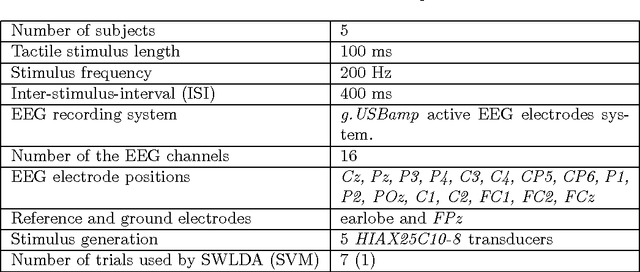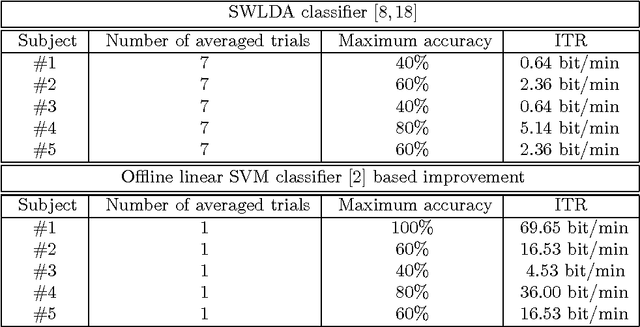Multi-command Chest Tactile Brain Computer Interface for Small Vehicle Robot Navigation
Paper and Code
Jul 28, 2013



The presented study explores the extent to which tactile stimuli delivered to five chest positions of a healthy user can serve as a platform for a brain computer interface (BCI) that could be used in an interactive application such as robotic vehicle operation. The five chest locations are used to evoke tactile brain potential responses, thus defining a tactile brain computer interface (tBCI). Experimental results with five subjects performing online tBCI provide a validation of the chest location tBCI paradigm, while the feasibility of the concept is illuminated through information-transfer rates. Additionally an offline classification improvement with a linear SVM classifier is presented through the case study.
* accepted as a full paper for The 2013 International Conference on
Brain and Health Informatics; to appear in Lecture Notes in Computer Science
(LNCS), Springer Verlag Berlin Heidelberg, 2013; http://link.springer.com/
 Add to Chrome
Add to Chrome Add to Firefox
Add to Firefox Add to Edge
Add to Edge